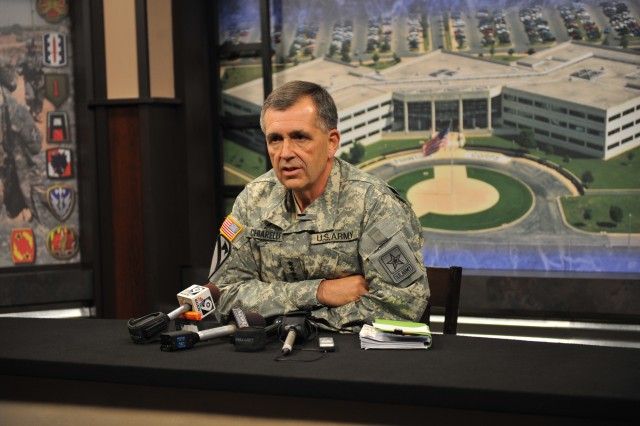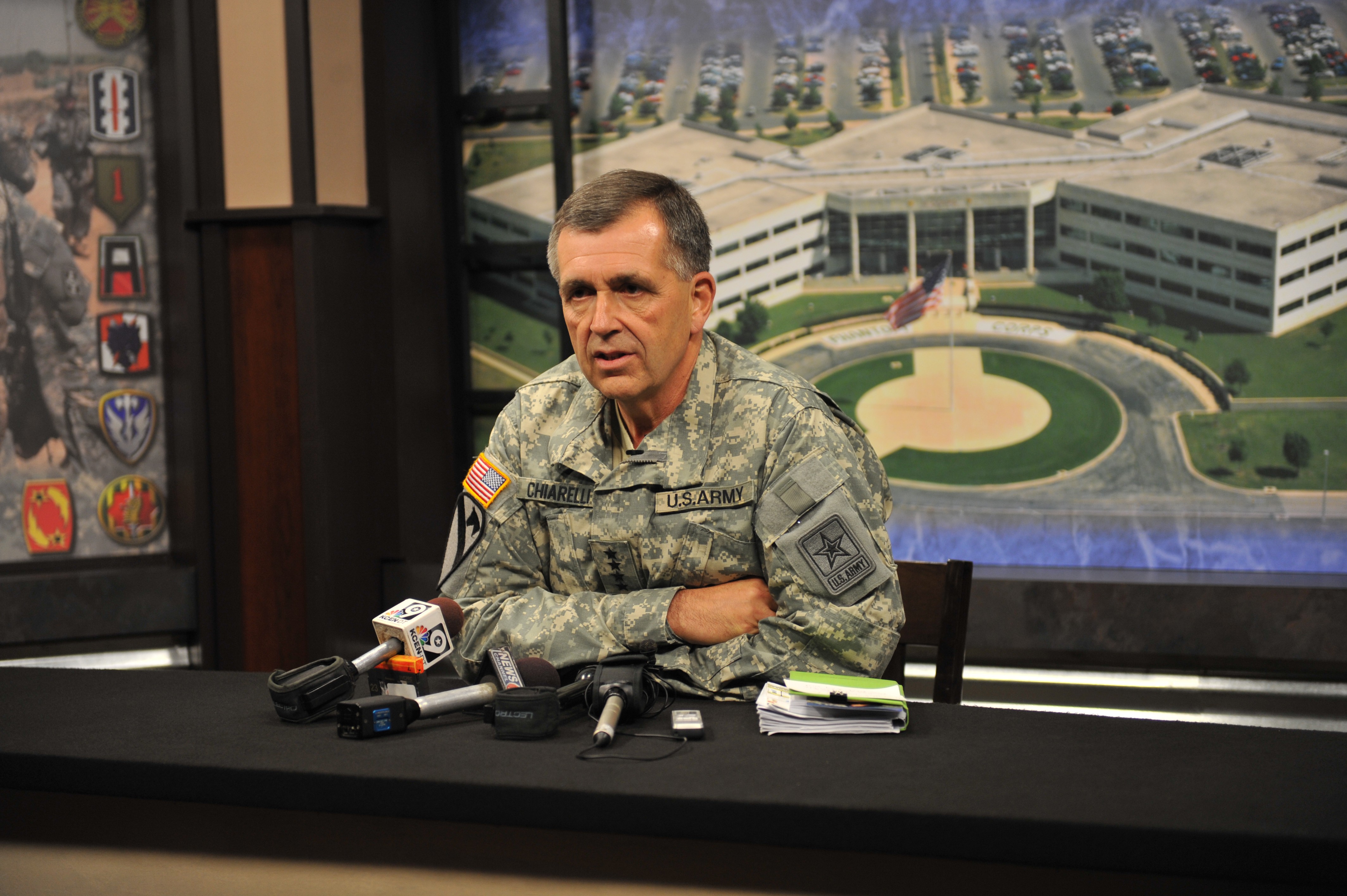FORT HOOD, Texas -- When Vice Chief of the Army Gen. Peter Chiarelli began an eight-day trip to seven Army installations across the country, his focus was on combating rising suicides in the ranks. After stops at the first few posts, the focus quickly broadened to include the overall mental health of Soldiers and their families.
Chiarelli and the suicide task force began visiting posts last week, looking at general trends in suicide and hoping to share best practices in prevention and treatment. The findings will be assembled in a plan that will be out soon.
What Chiarelli found is a stretched and tired force.
According to Department of Defense figures, 140 Soldiers killed themselves last year, an average of 20 Soldiers for every 100,000. This is the first time the Army has ever exceeded the Centers for Disease Control's most current statistic for the general population of 19 per 100,000, Chiarelli added.
This year has not started out well.
"We saw an alarming trend in the number of suicides during 2008, and the number - including those suspected, but not yet confirmed - for 2009 is still higher than average," Chiarelli said when he addressed the March 18, Central Texas and Fort Hood Chapter of the Association of the U.S. Army general membership meeting at the Killeen Civic and Convention Center.
Nearly eight years of combat on two fronts and multiple deployments have token a terrible toll on Soldiers and their families.
Relationship problems, substance abuse and alarming suicide rates have resulted. Many of these issues are interrelated.
In 2008, more than 70 percent of the Soldiers who committed suicide were having relationship issues, Chiarelli said.
"The last four years, we have seen the numbers go up," Chiarelli said. "There are some things we need to do."
Programs are available and in-place at installations and Army wide, but Chiarelli is looking into assuring the right programs are in place and enough providers are staffed. Currently, the Army is short on substance abuse counselors, he added.
There are good things happening, but more can be done to improve the mental health of Soldiers, Chiarelli said.
Installations need to look at adding resources and using innovation.
"Funding in most places is not the issue," Chiarelli said. "We need to look at the short-term and the long-term. We've got to find ways to provide resources."
Online mental health assistance, placing mental health care providers in primary care clinics and finding out the numbers needed at installations are some of the issues at which the task force is looking.
At Fort Hood, the vice chief praised III Corps and Fort Hood commander Lt. Gen. Rick Lynch's establishment of Thursday's Phantom Family Time as well as the Chaplains' Strong Bonds marital program as two examples of what the installation is doing right for mental health.
In addition, Chiarelli said the post was serving Soldiers well with the placement of mental health specialists within primary care facilities to encourage the seeking of mental health without fear.
When Soldiers seek and receive mental health care at their primary care center, no one knows they are there for any reason other than to see their doctor, Chiarelli said, they can avoid any stigma.
Stigma is a big problem for the Vice Chief of Staff.
He said a culture change in the Army is helping, but it needs to continue.
"We've stepped up and said we've got a stigma issue," the general said. "We are working very hard. This is not business as usual."
At all levels, the Army is working to find ways to raise awareness and prevent suicide.
For the first time ever, an Army-wide stand-down day was conducted for suicide prevention last month.
During the stand-down day, Soldiers at all levels were shown that help is available and accessible, they just need to seek it.
"There is no shame, no harm in getting help," Chiarelli said.


Social Sharing